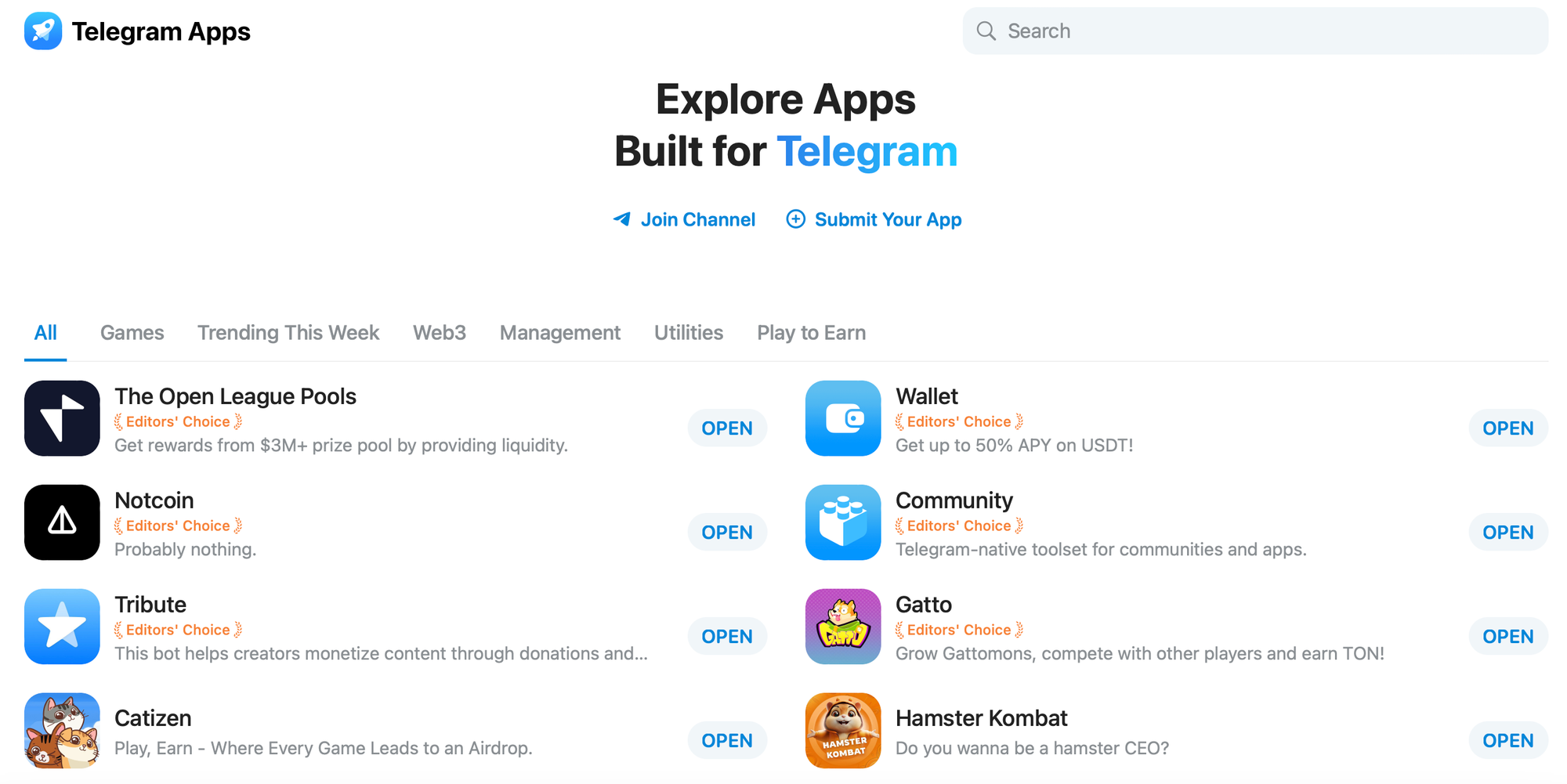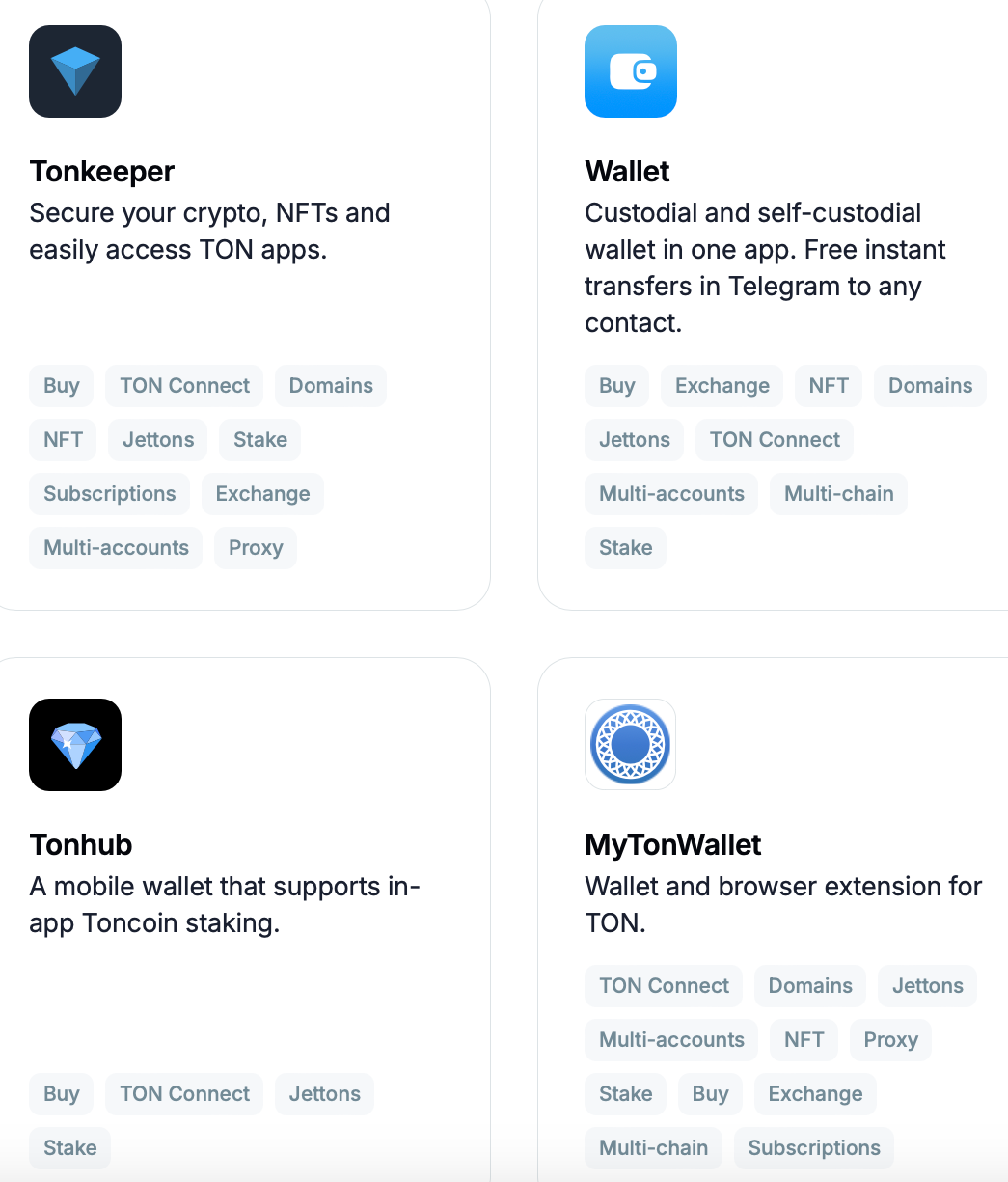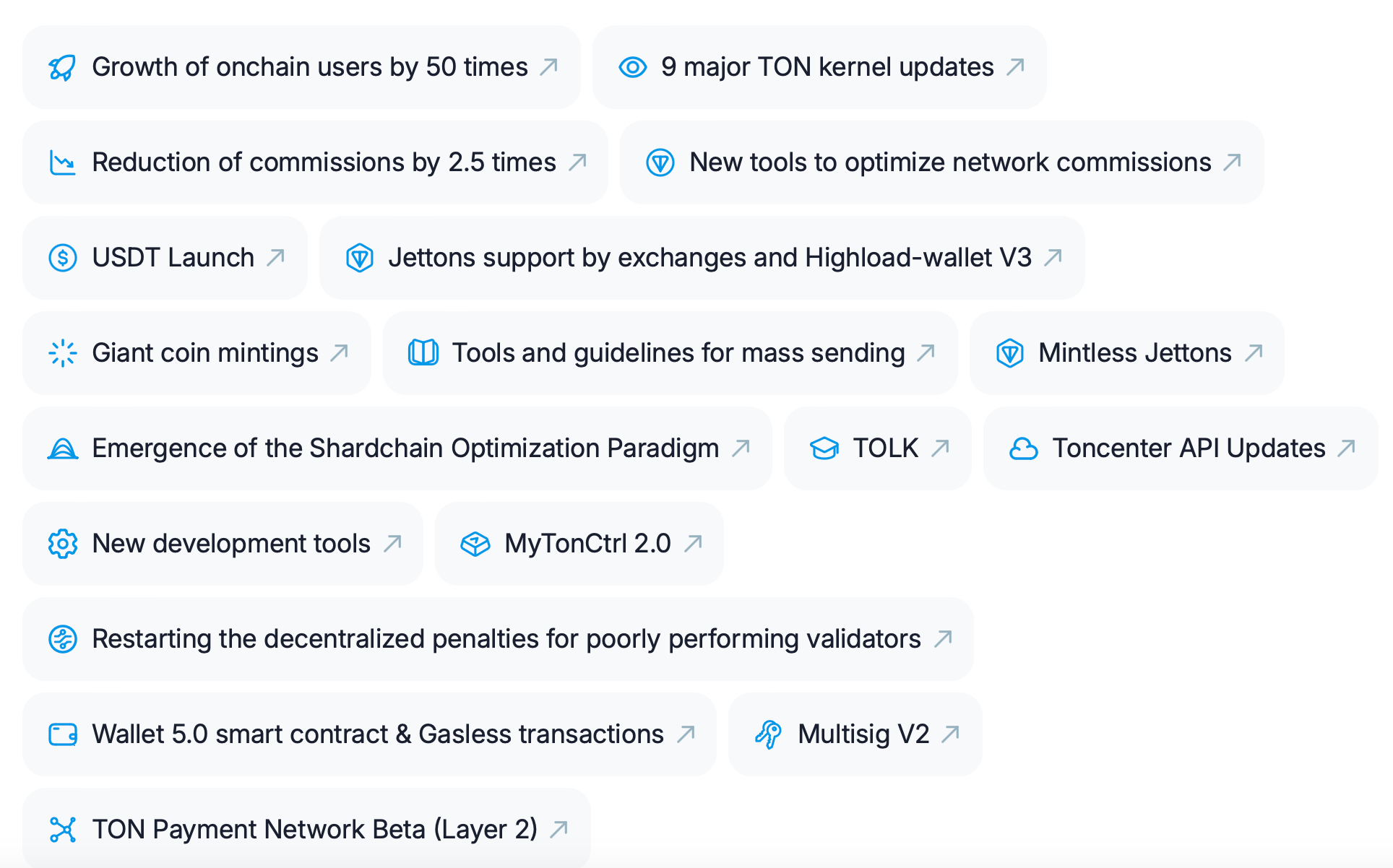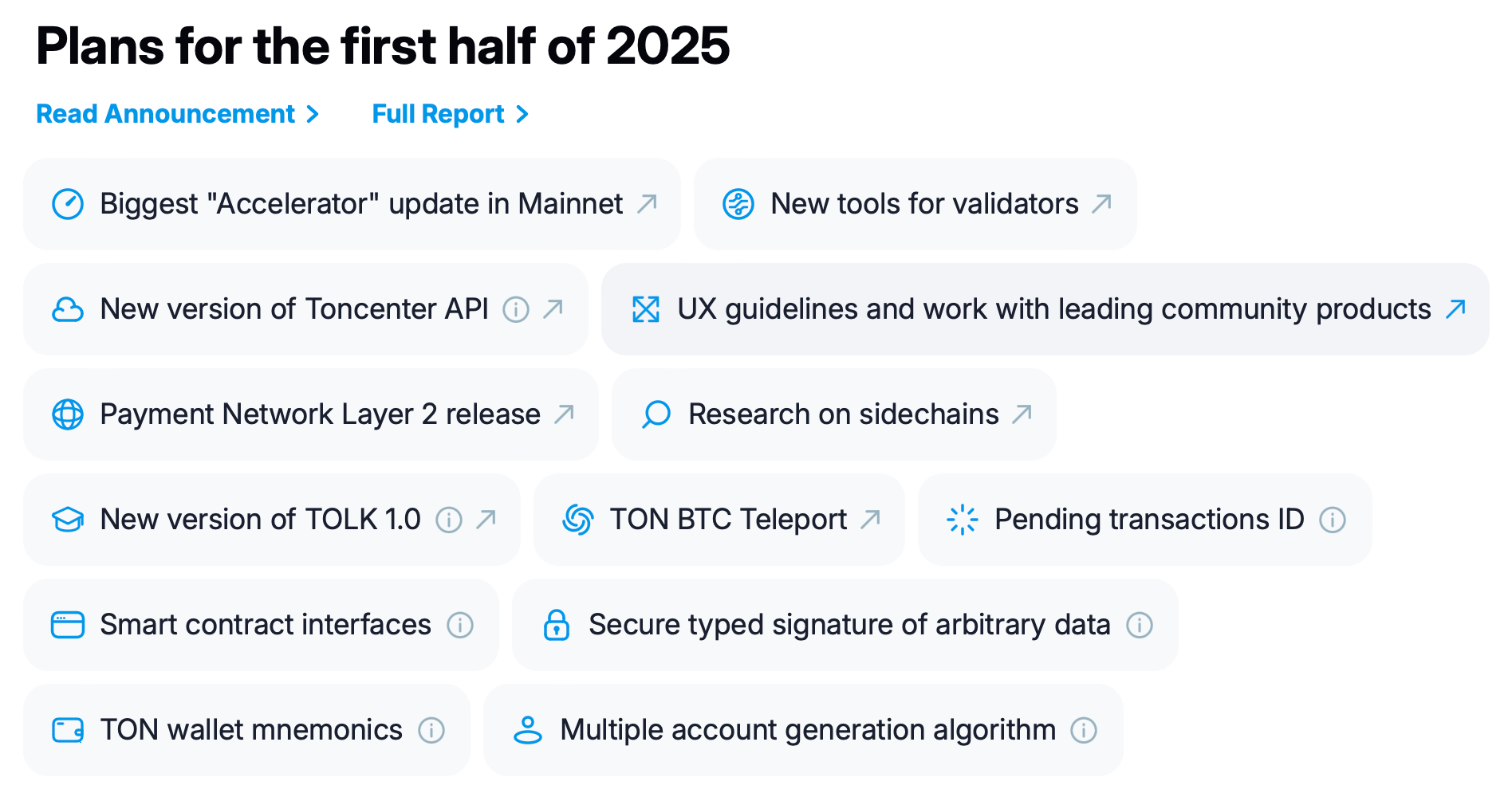Guide to TON blockchain and Toncoin

Born out of Telegram’s foray into crypto, TON is more than a blockchain. Scalable and innovative, it is growing by leaps and bounds. TON provides fast, cost-effective, and sustainable transactions, aiming to enroll billions of users. This community-driven project has a lot to offer — discover its strengths in our guide.
What is TON?
The Open Network (TON) is a Layer 1 blockchain based on proof-of-stake (PoS) consensus. It is the core of a mature ecosystem of experts, businesses, and proprietary products, from wallets to proxies.
The native token, Toncoin (TON), was previously known as Gram. Its utilities include transaction fees, payment settlement, and transaction validation. Like the underlying blockchain, it is deeply integrated with TON Network, defined as "a fully decentralized, secure and private computer network akin to TOR or the I2P."
History of TON and Toncoin
TON was conceived by the Telegram co-founders — Pavel Durov and his brother Nikolai. Initially called Telegram Open Network, or Gram, it emerged in 2018, five years after the instant messaging app.
The Durov brothers published the TON whitepaper and "lite paper". Dr. Nikolai Durov, the sole author of the former, is also credited with developing the codebase for the project.
Grams were initially distributed through private sales, and the project broke the record for the second-biggest token sale in history. In April 2018, it raised a whopping $1.7 billion. Later, the team sold tokens worth billions of dollars to businesses worldwide.
However, this publicity had a downside. Cybercriminals began exploiting Gram's popularity, creating ICO scams on Twitter. Durov posted multiple warnings on Twitter to protect the public, asking users to report suspicious accounts.
SEC vs. Telegram
Pavel Durov's choice of the jurisdiction spelled the fate of the blockchain. The team wanted to launch public sales in the US in compliance with the SEC (Securities and Exchange Commission) requirements. The initial investors were supposed to get their Grams upon TON’s launch.
The team did not expect the regulator to classify the tokens as securities. Yet the SEC took a different view. It considered the investors as underwriters and called the token offering unregistered distribution of securities.
A legal tussle ensued, and the judge ruled in the regulator's favor. As a result, Telegram was hit with a $18.5 million penalty and an order to return $1.2 billion to its investors.
Telegram abandons TON
In May 2020, Telegram abandoned the blockchain and initiated the refunds. The community picked up where the company had left off, using its open-source code on GitHub. Software developers and product creators formed the TON Foundation and launched the TON Society — the initial meeting point for new contributors.
Since then, TON has stood for The Open Network. It is now powered by Toncoin, another native cryptocurrency designed as a Gram replacement unrelated to Telegram.
TON’s mission
The blockchain trilemma — the challenge of reconciling scalability, security, and decentralization — still plagues early networks. Ethereum gas fees fluctuate, while the average speed at press time is merely 29 TPS. In 2020, when crypto lagged even further behind Visa and Mastercard, TON aimed to support millions of transactions per second (TPS).
The TON Foundation remains loyal to the original network design described in the whitepaper. It prioritizes the end users' needs, particularly the demand for fast and cost-effective payments. TON is designed for integration into easy-to-use apps for quick purchases, transfers, and storage. Its key strengths include:
- impressive speeds
- high scalability
- simplified interfaces
- a dedicated base of Telegram users
Ultrafast transactions are possible thanks to flexible architecture — specifically, near-instant cross-shard interactions. The use of multiple subnetworks, or shards, facilitates task completion. Each shard fulfills a specific purpose to prevent unverified blocks from accumulating.
As a result, TON can process millions of TPS and grow without any detriment to performance. Here are two of its structural pillars.
- Combinations of masterchains and workchains. The former mainly store the protocol’s general information; workchains contain data on events like smart contract transactions.
- Dynamic sharding. Workchains can be split into any number of shards (shardchains) to reduce the network load.
Furthermore, PoS makes TON more sustainable than Bitcoin. Instead of miners using computing power to mint coins, it relies on validators. They receive a share of transaction fees based on the size of their TON holdings.
Use cases for Toncoin
TON is an adaptable foundation for DApp building. Within this PoS environment, Toncoin is used in several ways:
- paying for decentralized applications (DApps) and services
- validating all transactions on TON
- rewarding validators
- rewarding nominators who lend tokens to validators
- voting on network changes
Nominators who want to lend tokens join a pool and stake their assets. Smart contracts — automated "if-then" agreements — manage both nominators and validators, making TON more secure. These contracts are executed via TVM, or TON Virtual Machine, which supports sophisticated deployments.
Toncoin also gives holders a say in the future of its ecosystem. It functions as a decentralized autonomous organization (DAO) with a simple voting system for proposed changes. This peculiarity fosters a sense of community, growth, and innovation.
Parts of the TON environment
TON users can store their assets, send payments, and use applications without centralized oversight. Here are five essential elements of this blockchain-based ecosystem.
Decentralized services
Using TON Services, developers build third-party apps based on smart contracts. A user-friendly interface gives easy access to these products, combined with a searchable registry of all TON Dapps and services. For example, TON Diamonds, an NFT marketplace & auction house, offers a wide variety of collections.
Here are a few examples.
- TON Sharks, and Mutant Toadz include themed NFTs from digital artists.
- StickerFace users create NFT avatars with wearable accessories, animations, and 3D effects. These can be used in games and apps across the network.
In 2025, TON announced a rebuilding of the art space. TON Diamonds will become "a launchpad for artists, fully focused on art — with no place for short-term profit." The official announcement acknowledges that NFT technology has "turned into a tool for speculation" while "NFTs should connect art, blockchain, and collectors."
In the revamped TON Diamonds, each new items will be give the opportunity to claim a physical original. New artists will enter the marketplace through DAO voting by collectors.
Telegram Mini Apps
The adoption of Telegram Mini Apps (TMAs) like Notcoin and Hamster Kombat spurred much of that massive growth. Between early January and late August 2024, the total value locked (TVL) in various TON projects surged over 2,000%, ballooning from $14.2 million to $307.6 million.

TMAs are web applications running within the messenger. Since January 2024, developers worldwide have been able to launch new apps directly using major web programming languages like HTML, CSS, and Javascript.
All apps are available in the Telegram Apps Center — a Mini App in itself accessible via a dedicated Telegram bot.
TON Wallets
TON works with custodial and non-custodial wallets. Users maintain complete control of their funds in mobile wallets like Tonkeeper or Tonhub and web wallets like TON Wallet. Alternatively, they may use simple custodial solutions — @wallet and Crypto Bot.

TON as decentralized storage
File storage on this blockchain resembles Dropbox, adding private encryption to familiar convenience. In January 2023, the TON Foundation launched a proprietary data storage ecosystem with two main goals:
- Facilitating the exchange of files without size limitations
- Incentivizing node operators to host files for users (an essential difference from torrents, which were not guaranteed to last)
TON Storage works like a P2P file-sharing system. TON sites hosted on it bypass centralized servers. Storing data across distributed locations guarantees secure transfer and storage.
TON Proxy and TON Sites
These products facilitate the Foundation's vision of a next-generation internet. Anyone can create TON Sites — web servers with websites on the network — for a symbolic amount of TON paid for each domain name from TON DNS. Subsequently, they sign in to all their sites with their TON wallet. This service was launched in September 2022.
TON Proxy opens access to ".ton" websites from regular browsers. Currently, the Foundation offers several public entry proxies, all compatible with regular HTTP proxies.
Opening a TON Site via TON Proxy. Source: Reddit
TON domain name service (DNS)
TON DNS streamlines the registration of domain names and usernames on the blockchain. It replaces strings of numbers and letters with easily memorizable names, working like a social media handle. TON DNS makes wallets, accounts, and apps more user-friendly.
Market cap and circulating supply of Toncoin
The current market cap of TON is $6.6 billion. According to CoinGecko, this makes it the 25th digital asset by market cap.
As proof-of-work mining stopped in June 2022, the total supply can only grow by a small percentage annually. Today, the maximum supply is 5.12 billion TON, while the available circulating supply is just under 2.5 billion TON.
Toncoin price
At press time, the current price of the TON coin is $2.70, with a 24h low of $2.62, a 24h high of $2.92, and a 24-hour trading volume of nearly $166 million. The cryptocurrency has lost 21.5% over the past seven days and is down 6.0% year-over-year.

The highest price paid for Toncoin — $8.25 — was recorded in June 2024. The lowest USD price of $0.519364 was seen just 51 days prior — in September 2021.
The token has gained over 418% compared to the all-time low, but it is over 67% below the all-time high. On CoinGecko, you can also see real-time Toncoin valuations for other quote currencies, such as the Hong Kong dollar.
2023-2025: Impressive expansion
Thanks to broad community support and practical focus, TON's growth in recent years has been impressive. The project is moving toward mainstream adoption — in October 2024, the number of active TON wallets reached a record 1.44 million. At press time, it stands at roughly 176,000.
In January 2023, TON launched its governance platform for tamper-proof voting, Ton.vote, which uses Orbs' layer 3 blockchain infrastructure. The news triggered a 98% 24-hour surge in the Toncoin trading volume — to $40 million.
Throughout 2024, TON supported mintings and token listings of Telegram gaming projects with a massive audience, such as Hamster Kombat, DOGS, Notcoin, CATS, Catizen, WatBirds, RockyRabbit, and X Empire. DOGS broke the record in terms of number of memecoin holders (6.3M holders ATH).

The new TON Mintless Jetton technology enabled developers to instantly distribute TON tokens to hundreds of millions of users, with network fees of less than a dollar. Cryptography and a smart contract guarantee ownership. Hamster Kombat applied this technology for its September 2024 giveaway.
That year, the total number of on-chain users increased fifty-fold. With the commissions 2.5 times lower thanks to new optimization tools, the network also launched USDt support.
Meanwhile, the release of MyTonCtrl 2.0 — an upgrade to the tool for node management — was packed with improvements, including support for multiple types of staking: liquid stakings, nominator pools, and single nominators.

Future of TON and Toncoin
TON has evolved into a scalable, fast, and cost-effective platform designed to onboard billions. With its innovative architecture, focus on decentralization, and integration with Telegram's user base approaching 1 billion accounts, TON continues to outshine many other Layer 1 projects.
Toncoin, pivotal to TON governance, transactions, and ecosystem growth, may become "the first-ever mass-market cryptocurrency," fulfilling the developers' vision. As TON continues expanding its use cases and refining its technology, the future looks bright, driven by a strong community and a vision for a decentralized, user-friendly digital economy.



